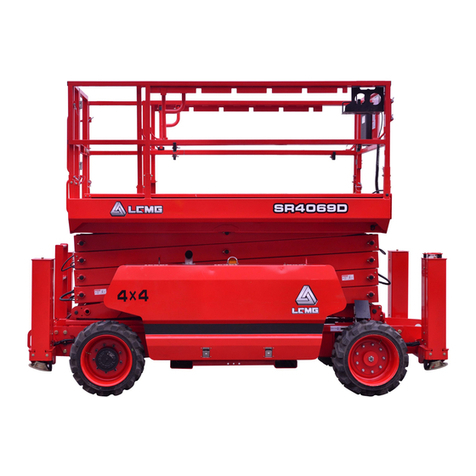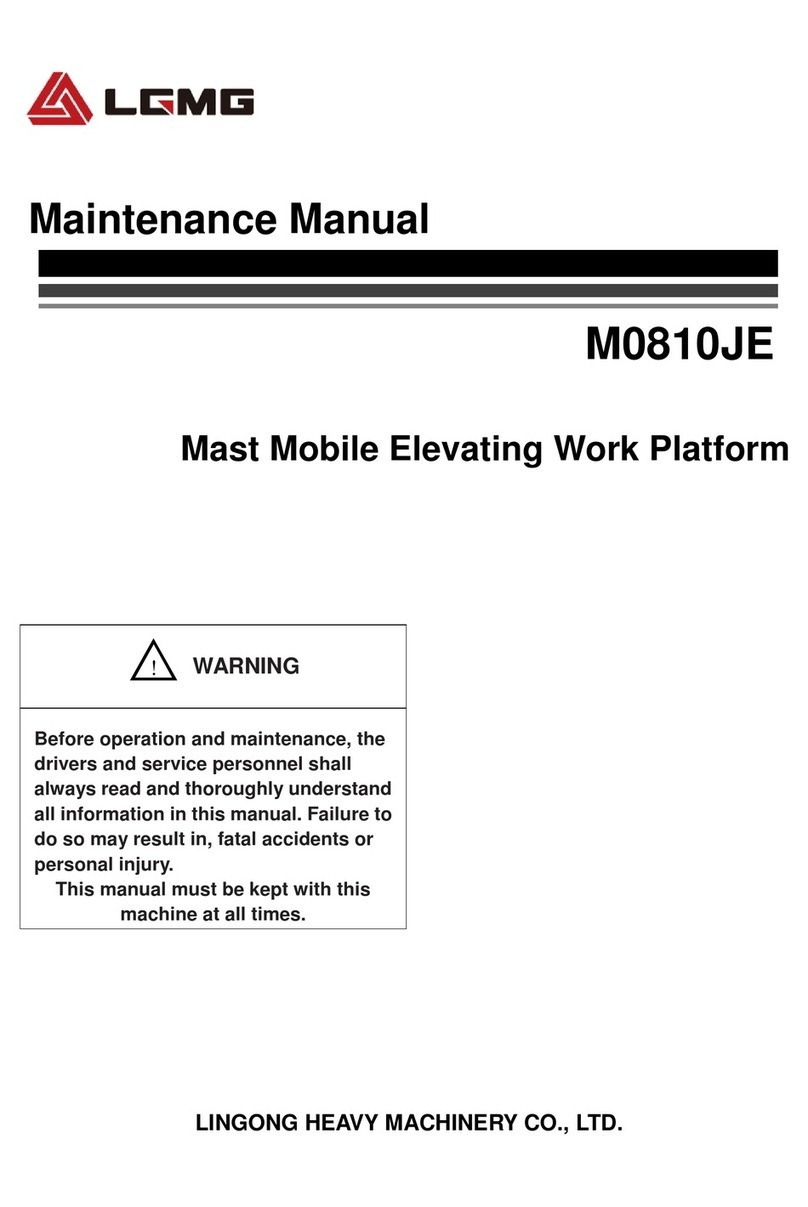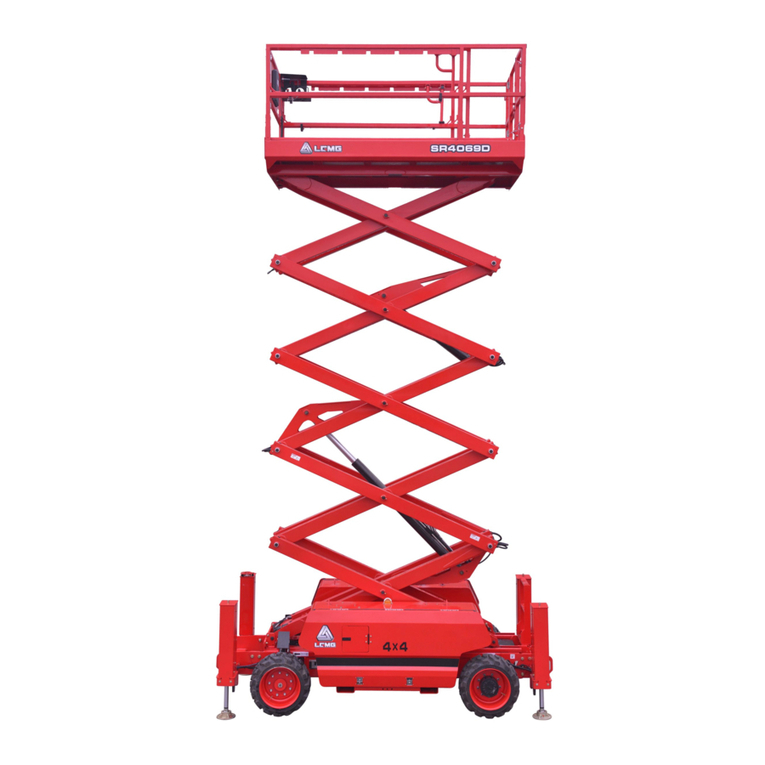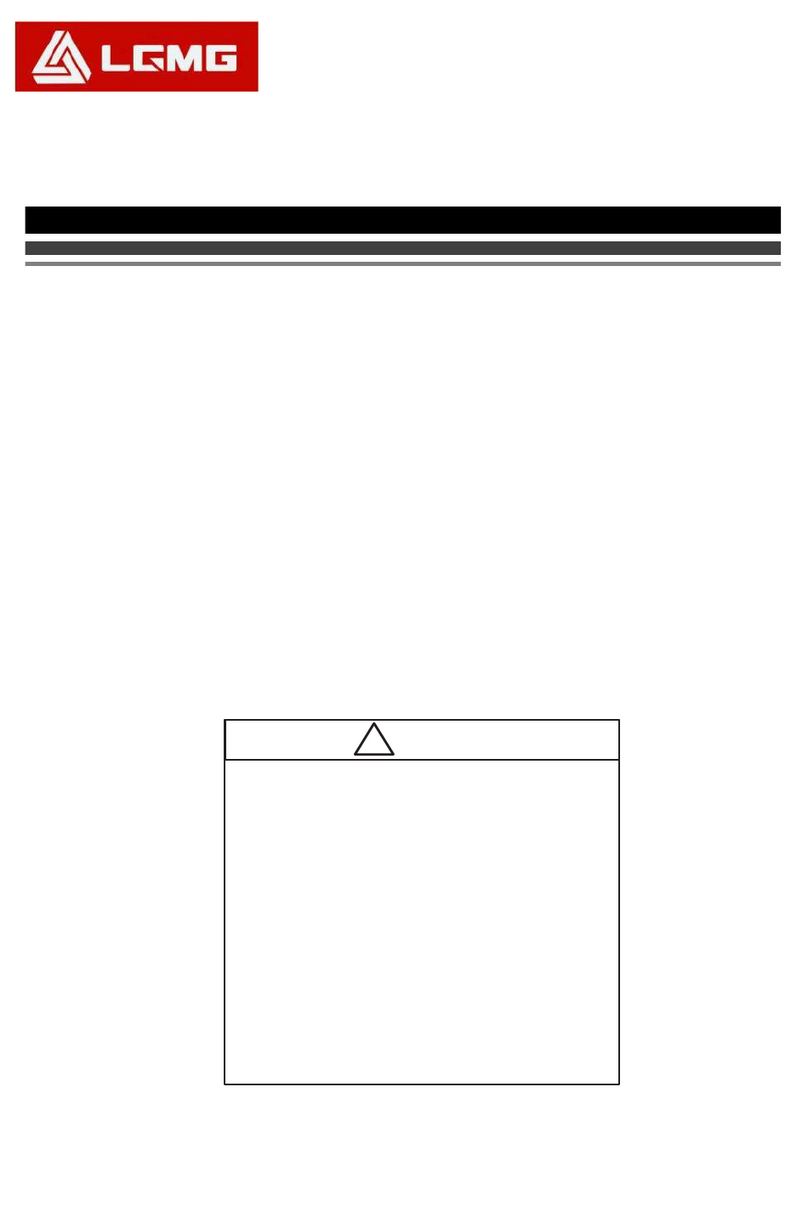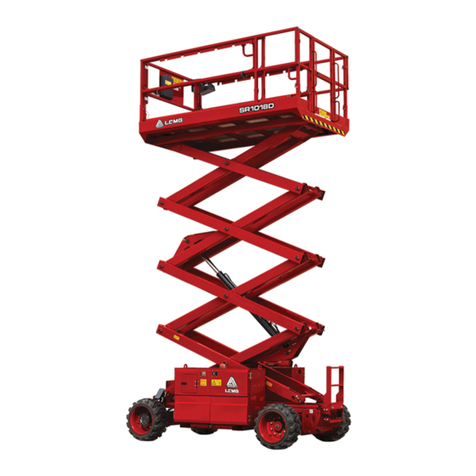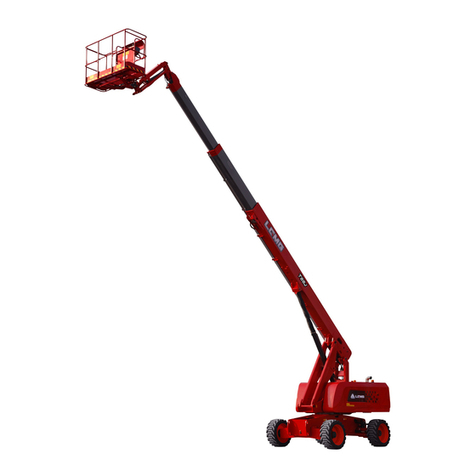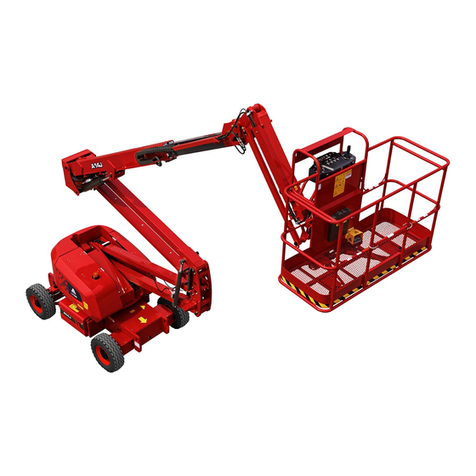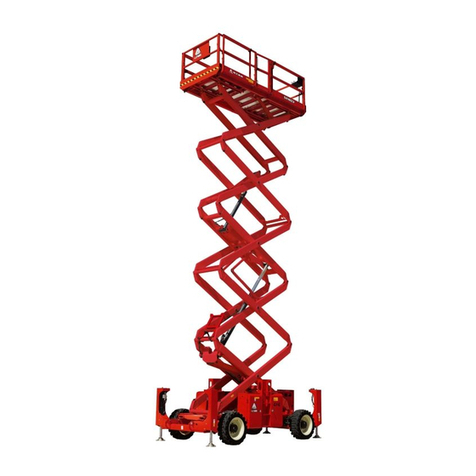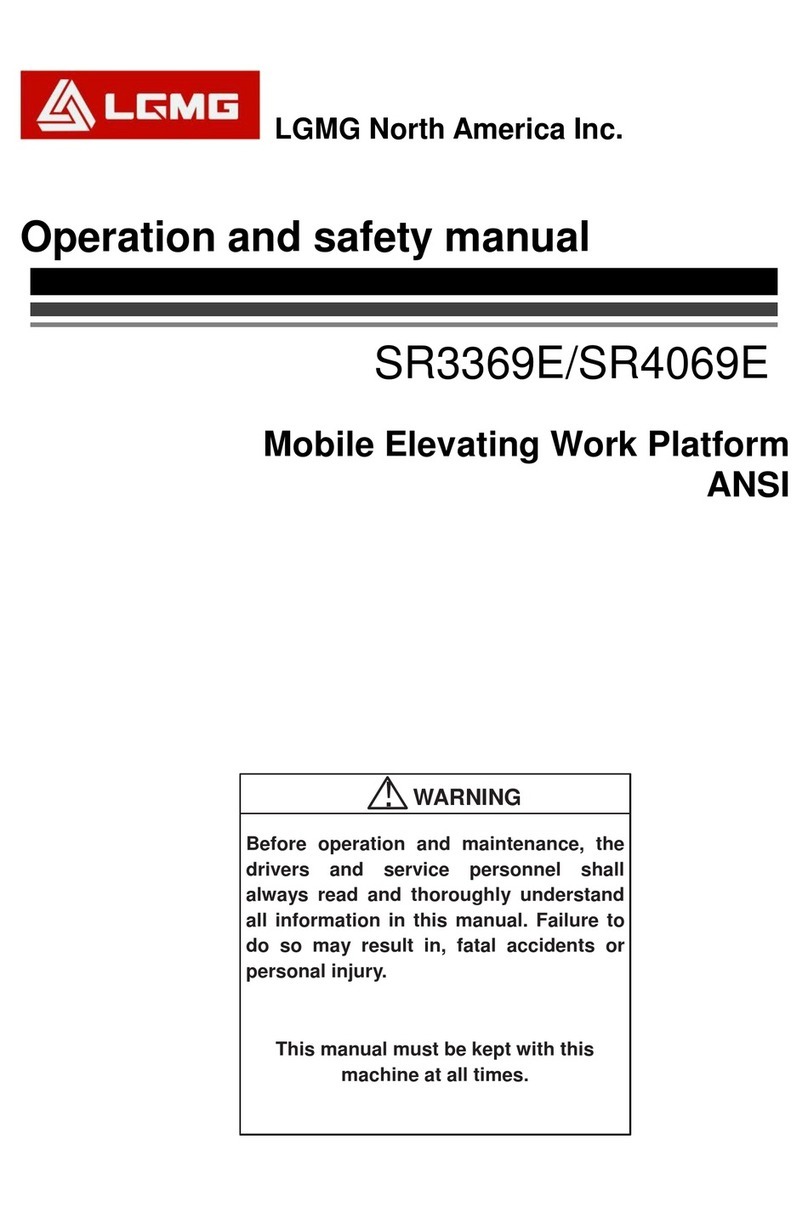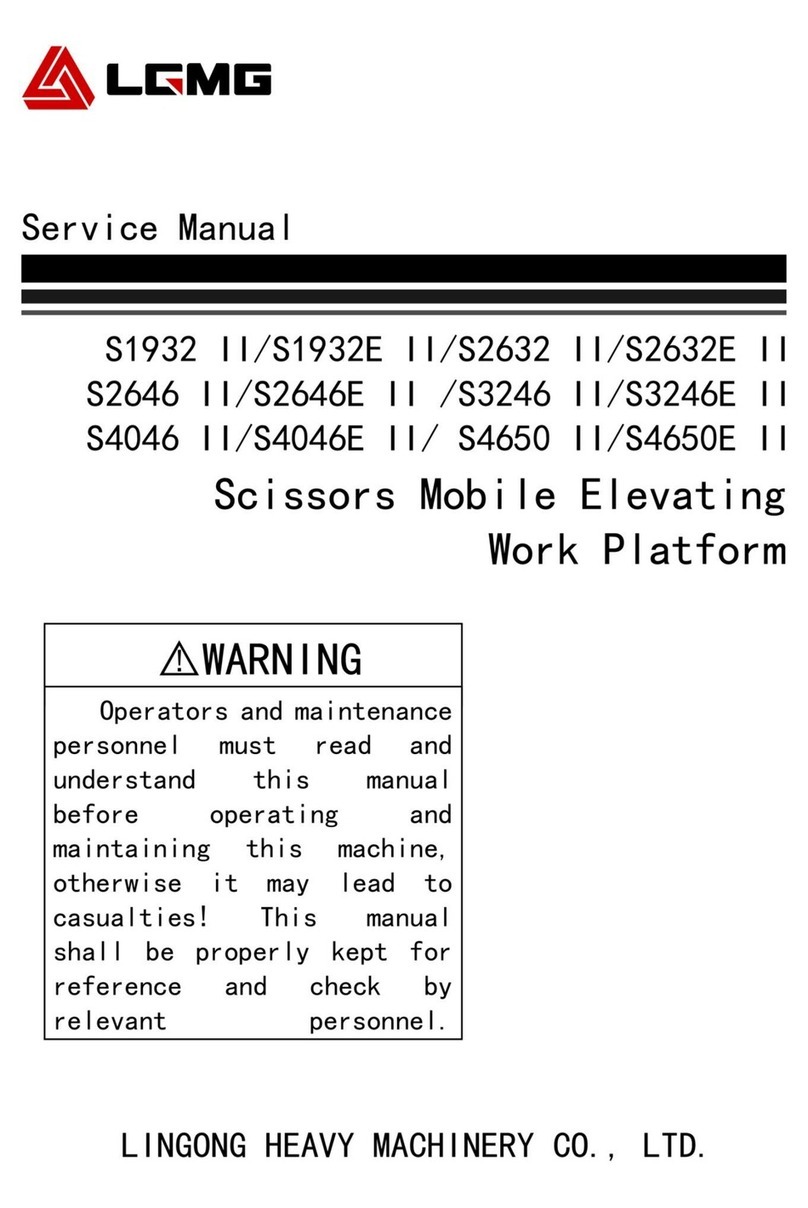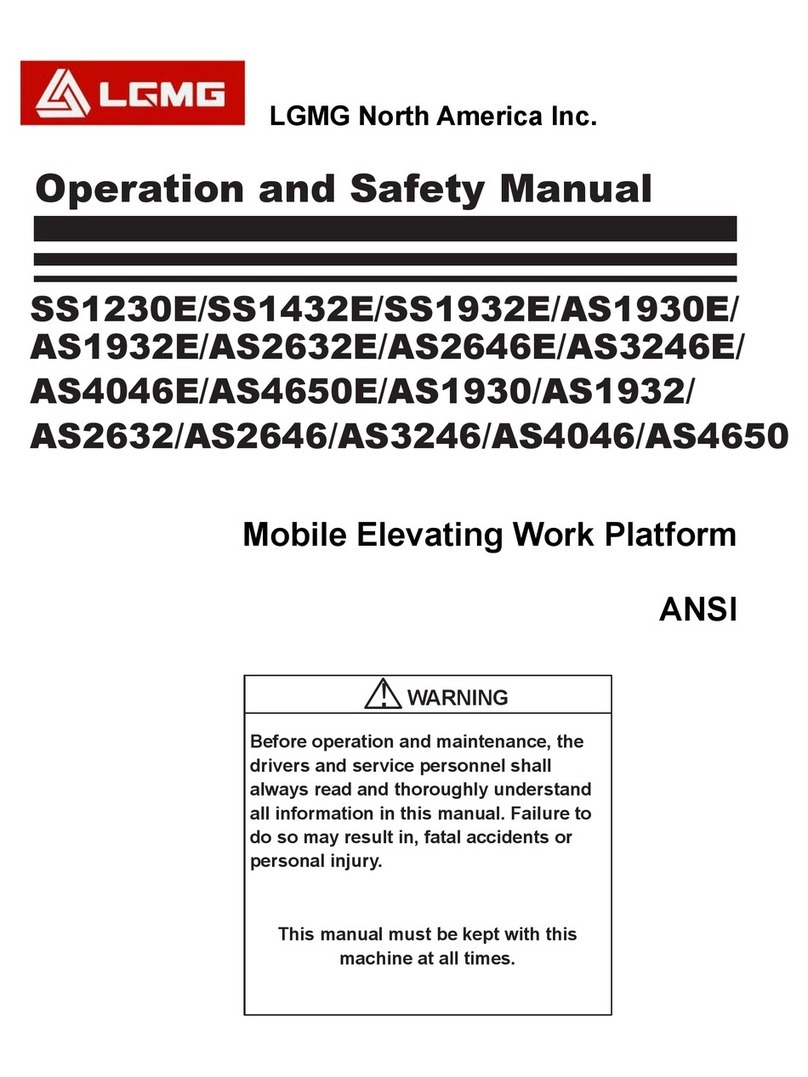
Maintenance Manual of Rough Terrain
Mobile Elevating Work Platform
4
Electrical components, wirings and cables
Hydraulic hoses, connectors, valve blocks
and hydraulic cylinders
Fuel and hydraulic tanks
Wear-resistant pads
Tires and wheels
Engine and related components
Limit switch and horn
Nuts, bolts and other fasteners
Platform extension components
Platform entrance door
Indicators and alarms
Safety arm
Scissors arms pin and fastener
Platform control handle
Outrigger cover and foot pad
2) Check the entire machine for:
Cracks in welds or structural components
Whether the platform, fork frame and
chassis are deformed or have cracked weld
joints.
Indentation or damage to the machine
Ensure that all structural components and
other key components are complete and all
relevant fasteners and pins are in the
correct position and tightened.
Ensure that the guardrail has been installed,
and guardrail bolts have been properly
installed and tightened.
△
!Notice: If the platform must be
raised to check the machine, ensure
that the safety arm is in the correct
position. See the "Operation
Instructions" section.
1.5 Check for PCU and GCU
This step is performed every 8 hours or every
day, whichever comes first.
The functions of the test equipment and the red
emergency shutdown switch are required for
safe operation of the platform. If there is an
unsafe working condition or any normal
operation failure, the red emergency shutdown
switch will disable all functions and shut down
the engine. Each function shall be enabled for
smooth operation without any pause, jitter or
abnormal noise.
1) Pull out the red emergency shutdown
switches on the GCU and PCU.
2) Turn the key switch to GCU. Start the
engine.
3) It is strictly forbidden to press the lift
enabling switch and try to turn on each
function switch.
Result: Operation of all functions shall be
forbidden.
4) Press and hold the lift enabling switch to
turn on each function switch.
Result: All functions shall be performed for a full
cycle. The buzzer shall sound when the platform
falls down.
5) Push the red emergency shutdown switch
button on the GCU to the "Off" position.
Result: The engine shall be shut down and all
functions shall be disabled.
6) Turn the key switch to the operation
platform control unit, and pull out the red
emergency shutdown switch to the "On"
position on the GCU.
7) Start the engine through the work platform.
8) It is strictly forbidden to press the function
enabling switch and try to perform all
platform functions.
Result: Operation of all platform functions shall
be forbidden.
9) Press and hold the function enabling switch.
Try to perform all platform functions.
Result: All platform functions shall be performed
for a full cycle.
10) Push the red emergency shutdown switch
button on the PCU to the "Off" position.
Result: The engine shall be shut down and all
functions shall be disabled.
1.6 Check for wires
This check should be performed every 250 h or
quarterly, whichever comes first.
1) Keeping wires in a good condition is critical
for safe operation and good performance of
the platform. Failure to find and replace
wires burned, scratched, corroded or bent
will result in unsafe operating conditions or
even cause damage to platform parts.













